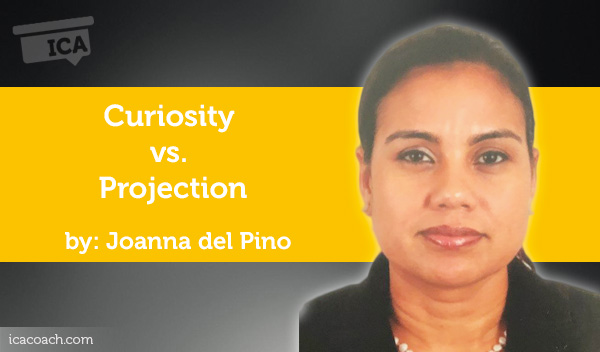
A Coaching Power Tool Created by Joanna del Pino
(Life Coach, TRINIDAD AND TOBAGO)
My first mentor coaching session where I took on the role of the coach was epic. It will forever be etched in my mind, but not necessarily in a good way. There was so much opportunity for improvement and learning that the mentor facilitator thought it apt to intervene when I was half way through and by the time all the observations and recommendations were outlined to me, our time had run out. There was not even a window for me to re-start the session as the feedback was like a cleaning job that needed a great deal of “elbow grease”. I came to understand that my main downfall was that after the first two minutes, I believed that I had a solution for the client. The rest of the session I dedicated to getting her towards the “epiphany” that I had planned for her by prodding her through this maze I created, with my leading questions. I had an agenda and my innocent client was sucked into my vortex. She stumbled along dazed, hoping that she would eventually get to where she wanted to be.
As a coach it is sometimes easy to assume that you know what the client is thinking and feeling and even more so, what is best for the client, especially if you have experienced something similar in the past. We project our own life, circumstances, personality and experience onto others and believe that we have all the answers. Instead of a session being time set aside to lend support to a client in achieving his/her goal, with projection, it can turn into an interactive style live performance with the coach being the star and the client being part of the audience, who obediently participates on cue.
I have learned a lot since this first mentor coaching session. I now understand the true value of curiosity: of asking those powerful questions and even the simplest ones to provoke thought and bring about shifts within the client. I have learned that asking a question at the beginning of the session and asking the same question towards the end of the session may evoke completely different answers. I understand that a word used by a client to describe a feeling or a situation can provide a lot of insight into the client’s perspective and just being curios about that word: asking him/her to tell me more, can unleash a flood of underlying currents that the client may not have been aware of before. I have learned that even the simplest question: “what’s the worst that can happen?” is sometimes enough to create a shift in a client’s thinking and propel him/her forward to making a decision.
Coaching Application:
In order to minimize projection and foster more curiosity, I try to apply this criteria to each session:
- Approach it with a clean state allowing the client the nurturing space to express his/her thoughts, feelings and goals.
- Maintain an 80%:20% balance: allow the client to speak for 80% and interject with questions where relevant to provoke further thoughts and dialogue. The coach’s input should really account for only 20% of the conversation.
- A coach’s curiosity should not extend to acquiring further details about the situation but rather about the client.
Here are some questions that I have found to be very valuable in provoking thought:
- What about this is important to you?
- What would it take to make this a priority?
- What is making you hesitate?
- What’s getting in the way of your excitement?
- What’s a good place to start to explore this issue?
- What is the anxiety saying to you?
- What is your anxiety protecting you from?
- What are the consequences of holding on to these negative feelings?
- If you were guaranteed success for each option before you, what option would you choose
- If you had a choice, how would you like things to be?
I believe once the above is kept in mind through the coaching session, it ensures that the focus is kept on the client and away from the assumptions and projections of the coach. This ultimately leads to a more successful outcome for the client.